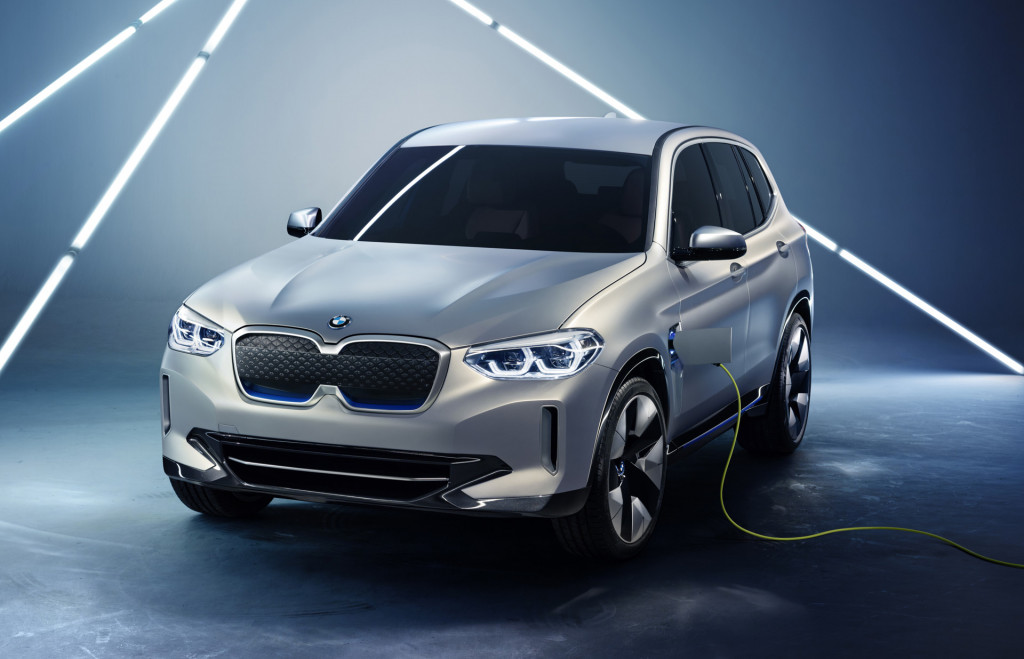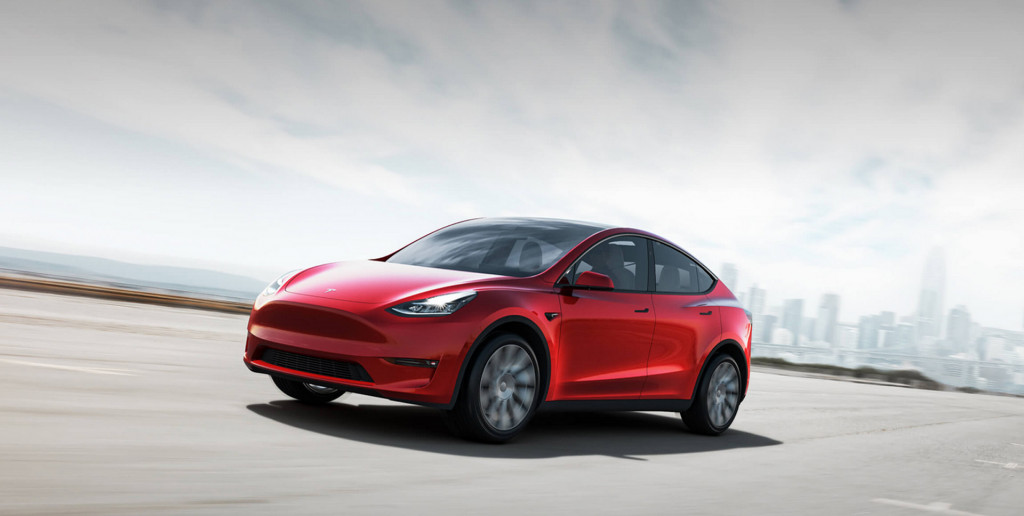As Tesla finds its sea legs as a larger-scale global automaker, the launch of the Model Y small crossover is its most critical test since the California company started in 2003.
No other Tesla has faced this much competition. No other Tesla has faced much of any.
When Tesla first delivered the Roadster in 2008 it was a novelty. The peerless Model S that followed was revolutionary in the luxury performance sedan space; the Model X was the first long-range electric in the booming crossover segment. The Model 3 finally made the automotive world take Tesla seriously, even as delays and Elon Musk’s tweets suggested otherwise.
By being one of the first automakers to prove that long-range electric vehicles could be distinctly sexy, technologically loaded, potentially profitable, and fun to drive, Tesla paved the way for other automakers to follow. So much so that last year we called 2019 the year of the electric SUV.
Joining the Jaguar I-Pace and the Chevy Bolt EV (it’s a hatch, it’s a crossover), Audi, Volkswagen, Mercedes-Benz, BMW, Hyundai, Kia, Volvo, Ford, Rivian, and several other hopefuls are launching or planning to launch electric crossovers by 2021. With the exception of Tesla, GM and Nissan, these slower-to-market automakers will benefit from the full $7,500 federal EV tax credit—if it still exists.

2017 Tesla Model 3, in photo tweeted by Elon Musk on July 9, 2017
They also will benefit from experience in rolling out new product lines to scale without all the delays, snafus and glitches we’ve come to expect from Tesla.
But being first and being different still has its advantages. Tesla’s over-the-air updates should become the industry standard, though maybe without the fart noises; spartan interiors anchored by a large central touchscreen interface instead of a dashboard have ushered in a new design paradigm; and everything from retractable door handles to gut-dropping Ludicrous modes combine form and function into something other automakers―and other drivers―envy.
It remains to be seen if shoppers of electric crossovers will prefer more familiar vehicle layouts or something a bit more Tesla. What is certain is that when the Tesla Model Y arrives late in 2020, there might be a dozen other small electric crossovers on the market.
Here’s a look at the entire potential competitive set around that time—some very likely, others more tentative, and minus whatever brands might actually reach the market from China or funded by China.
Prices are including current/projected destination fees when possible, and tax credits are an estimation of where brand sales will be by the time deliveries of each model start.
AVAILABLE NOW

2017 Tesla Model X
2019 Tesla Model X
With “falcon-wing” doors, monopost seats, a windshield with horizontal and vertical views, the Tesla Model X might be too innovative for its own good. It’s a wonder, despite all its growing pains, and it’s a wonder if anyone will continue to pay that price when the competition rolls out a three-row electric crossover. Yes, the Model X costs a lot more than Model Y, but we think for a certain crowd that might not matter so much.
Starting price: $89,200
Available federal tax credit: $3,750; down to $1,875 by 2019 Q3
Battery: 100 kwh (now unspecified, with "Long Range" nomenclature)
EPA estimated range: 289 to 295 miles
Availability: Now, North America, Europe, China

2019 Jaguar I-Pace S
2019 Jaguar I-Pace
There’s a lot to love about Jaguar’s first all-electric vehicle, but the two-screen setup takes too long to figure out and, along with the traditional button displays, it all feels too busy (and laggy), especially compared to Tesla’s singular set up. And, critically, its range estimates have been buggy almost every time we've driven the car. But the large wheels, a high beltline, a low roofline and short overhangs, the Jaguar I-Pace has a head-turning modern design that is part wagon, part crossover and 100 percent better looking than the humpback whale known as the Model X. Smaller, lower proportions translates to better handling than the X, too, but it seats only five.
Price: $70,495 base
Available federal tax credit: $7,500
Battery: 90 kwh
EPA estimated range: 234 miles
Availability: Now, global

2019 Chevrolet Bolt EV
2019 Chevy Bolt EV
At $35,000, the Chevrolet Bolt EV is the first long-range electric vehicle for the masses—and maybe for fleets and autonomous ride-sharing. The technology is easy to use both on the 10.25-inch screen and with one-pedal driving. Interior room is ample for the urbanites who might own one, and it’s punchy enough. The Bolt is a good car but it might get the budget-car treatment in getting overshadowed by flashier entrants with the full tax-credit potential.
Base price: $37,495
Available federal tax credit: $3,750 (as of Apr. 1); down to $1,875 in 2019 Q4
Battery: 60 kwh
EPA estimated range: 238 miles
Availability: Now, North America, South Korea, UAE, Europe under French PSA

2019 Hyundai Kona Electric
2019 Hyundai Kona Electric
The 2019 Hyundai Kona Electric was one of our favorite small crossovers to drive in 2018, and it sounds like the winning formula carries over to the electric: refined without being expensive, sharp without being obnoxious, and an overall good vehicle. It's the longest-range affordable electric SUV and stands out from upcoming rivals from Kia with independent design and execution and battery cells from LG Chem, rather than SK Innovation.
Base price: $37,495
Available federal tax credit: $7,500
Battery: 64 kwh
EPA estimated range: 258 miles
Availability: 2019 Q1—California first, then EV states, then nationwide.
--
AVAILABLE SOON

2020 Kia Soul EV
2020 Kia Soul EV
The second iteration of the electric quirkmobile should be more broadly available and better received. Range more than doubles, power is boosted, and the list of standard convenience and advanced safety features is remarkable. Between the Kia Niro EV and Hyundai Kona EV, the Kia Soul EV stands out of the box, so to speak, in this crowded small crossover field.
Base price: $35,000 (estimated)
Available federal tax credit: $7,500
Battery: 64 kwh in FWD
EPA estimated range: 243 miles
Availability: 2019 Q2 in California first, then Oregon, Washington, Connecticut, Maryland, Massachusetts, New Jersey, New York, Vermont, Rhode Island, Georgia, Texas, Hawaii

2019 Kia Niro EV
2019 Kia Niro EV
Longer and larger than the Soul EV, the Kia Niro EV is the more buttoned-down of the Kia EVs, with a smaller, more conventional touch screen, and more traditional crossover design. The Niro is also available as a hybrid and plug-in hybrid.
Base price: $38,000
Available federal tax credit: $7,500
Battery: 64 kwh
EPA estimated range: 239 miles
Availability: 2019 Q2 in California first, then Oregon, Washington, Connecticut, Maryland, Massachusetts, New Jersey, New York, Vermont, Rhode Island, Georgia, Texas, Hawaii.

2019 Audi e-tron first drive - Abu Dhabi UAE, December 2018
2019 Audi e-tron quattro
Larger than the Model Y but smaller than the Model X, the 2019 Audi e-tron is a five-seat SUV slotted between Audi's Q5 and Q7 in size. The e-tron’s competitive advantage is how utterly familiar it feels, despite the name. It looks and feels like a typical Audi crossover, albeit quieter and quicker.
Base price: $75,795
Available federal tax credit: $7,500
Battery: 95 kwh
EPA estimated range: N/A (likely around 220 miles)
Availability: Summer 2019, nationwide
--
AVAILABLE LATER

2020 Mercedes-Benz EQC
2020 Mercedes-Benz EQC 400
A tad longer than the gas-powered GLC, the Mercedes EQC400 looks like a Mercedes on the outside and in, including a revised dash cluster and 10.3-inch infotainment touchscreen. Despite the smaller battery pack size than the competition, the rear-wheel drive bias in some modes provides an estimated 0-60 mph time in 4.9 seconds, according to Mercedes.
Estimated base price: Around $70,000
Available federal tax credit: $7,500
Battery: 80 kwh
EPA estimated range: N/A (likely about 250 miles)
Availability: 2020

BMW Concept iX3
2020 BMW iX3
The BMW iX3 will be based on the X3 small crossover and likely built in China. While the vehicle has been confirmed, few if any of its details have. BMW is late to the party, especially considering all its plug-in hybrids, the i3 and i8, and earlier electric products.
Estimated price: $55,000
Available federal tax credit: $7,500
Battery: 70 kwh (estimated)
EPA estimated range: N/A
Availability: Late 2020

Tesla Model Y
2020 Tesla Model Y
The surprise here is two small seats in the rear for seating up to seven. Expect it to be similar to Model 3, but a few inches longer, slightly higher seat height and plenty of head room. If you really wanted the Model 3 to arrive as a hatchback, it's probably something you'll like very much. Long Range models arrive starting in late 2020; a Standard Range model with 230 miles of range and a $40,200 price won't arrive until early 2021.
Starting price: $48,200
Available federal tax credit: $0
Battery: 75 kwh
EPA estimated range: 280 to 300 miles
Availability: Late 2020

Volvo 40.1 concept
2020 Volvo XC40 electric
Not much is known at this point, but the winning small crossover will likely take electrified design cues from the Polestar 2, Volvo’s new EV-performance subbrand. The Polestar 2 compact sedan could shape up as a strong Model 3 rival, with a 275-mile range on a 78-kwh battery in AWD models making 400 horsepower, and if the Volvo follows its lead here that could be good competition for the Tesla Model Y.
--
Stay tuned for more news on some of the models that aren't mentioned here, like the Ford Mach E (or Mach 1) and the Volkswagen ID Crozz, which are due to arrive in 2020, and the Rivian R1S, due in 2021.
—Robert Duffer












